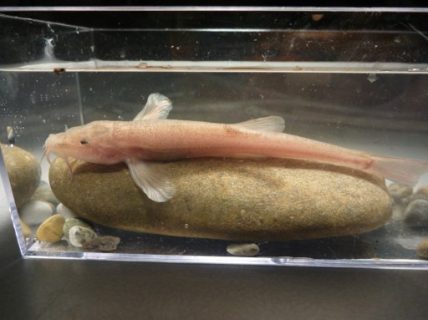
MIAMI, United States (AFP) — A diver spotted an unusual pink fish swimming in an underwater grotto in Germany, and researchers now say it is the first known cave fish ever discovered in Europe.
The fish, known as a loach in the genus Barbatula, was found in the dark, remote, frigid underground caverns at the junction of the Danube River and Aachtopf springs in southern Germany, said the study in Current Biology.
Until now, more than 150 types of cave fish — which typically have little pigment and no or very small eyes — were known to reside on all continents except Antarctica and Europe.
Diver Joachim Kreiselmaier first spotted the strange-looking fish in August 2015, while exploring the deepest parts of the Danube-Aach system, said the study.
“No more than 30 divers have ever reached the place where the fish have been found,” said Kreiselmaier.
“Due to the usually bad visibility, strong current, cold temperature, and a labyrinth at the entrance, most divers do not come back again for diving,” he said.
He took some photos, showed them to cave fish experts, and went back. He caught some live loaches and brought them back for study.
Researchers compared the loaches’ physical and genetic characteristics to fish that swim near the surface by the cave and confirmed “that the cave loaches are indeed an isolated population and the first known European cave fish,” said the report.
Since they live in darkness, the loaches’ have smaller eyes that appear to be curved inwards, and their color is drastically faded compared to other fish.
Other adaptions by the cave fish include long, whisker-like barbels on their heads and larger nostrils.
Researchers say the European cave loaches likely arose in the last 20,000 years.
“It was only when the glaciers retreated that the system first became a suitable habitat for fish,” said Arne Nolte from the University of Oldenburg and the Max Planck Institute for Evolutionary Biology.







